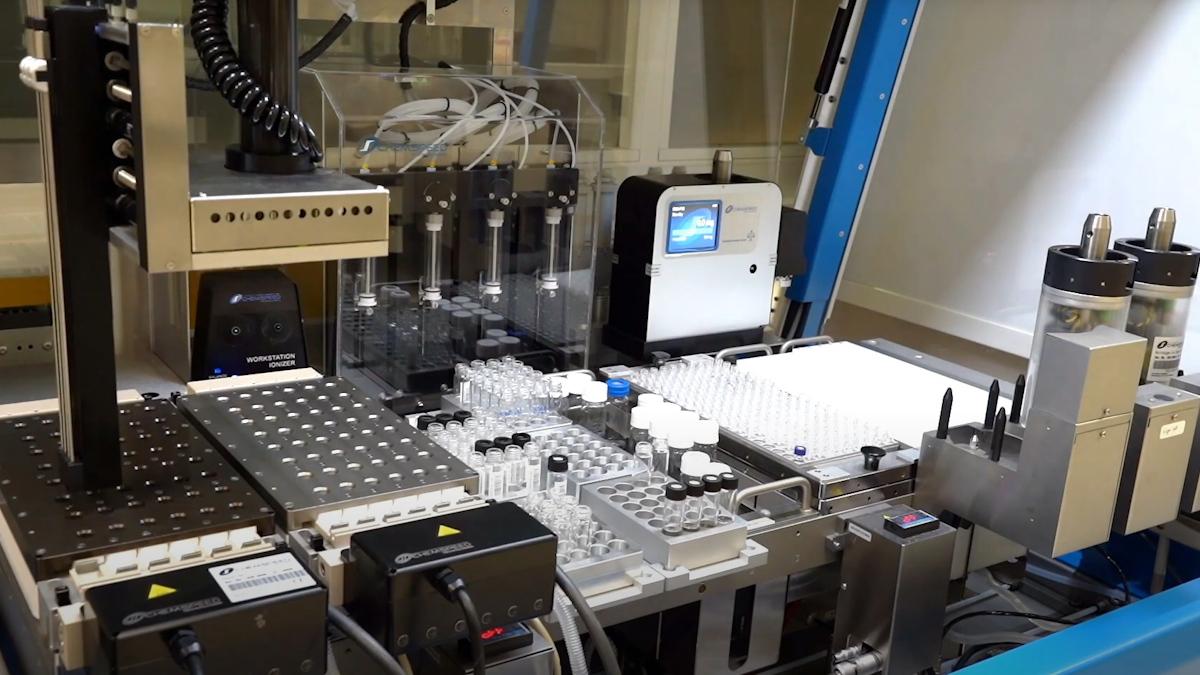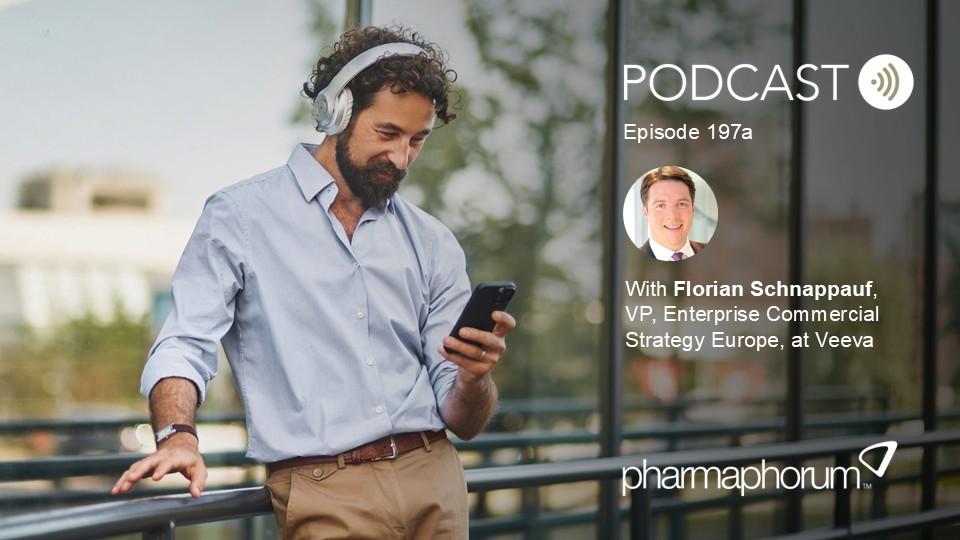Veeva R&D and Quality Summit: Delivering next-generation innovation for patients

Veeva Systems held its R&D and Quality Summit in Madrid from 5th to 7th June, once more returned to the Marriot Auditorium & Conference Centre – which only just about held the event’s considerably expansive attendee list, comprised of individuals from within pharma and life sciences who had eagerly congregated to hear of the latest developments from the information technology company.
The opening keynote, ‘Delivering for Patients: Innovation in R&D and Quality’, was given by President of Veeva Europe, Chris Moore, who told the audience – some newbies, many multiple returnees – that the aim of the three days was to help trials teams “do the job just that bit better”.
Indeed, as Moore later advised: “This was Veeva’s largest R&D and Quality Summit yet in Europe, attended by nearly 900 life sciences leaders from 28 countries, all working towards one mission: delivering next-generation innovation for patients.”
Connecting the ecosystem together
With an advance to Suites from Apps and the company’s intention to make each function more effective, build efficiency, and “go beyond, another step further” – enabled by connecting the Suites up into the Development Cloud and joining up sales, medical, and marketing in the Commercial Cloud – Moore explained how this, in turn, can connect organisations and thereby accelerate processes. In short, progressing overall into a new phase, Veeva’s aim, he said, is to connect the ecosystem together.
In a year when ‘collaboration’ and ‘partnership’ are veritable buzzwords across the industry, the intention to ameliorate clinical trials work – to connect sponsors with CROs, sites with investigators, and also help to get to patient populations who might otherwise not be reached– is fitting, not just for the Summit itself, with its theme of delivering for patients, but for the sector as a whole; not least following the UK Life Sciences Council response to Lord James O’Shaughnessy’s Independent Review and the recent update to EU pharmaceutical legislation by the European Commission.
Moore stated that he hoped that in two decades from now, the company’s vision remains the same: to do the right thing for society, for industry, and for customers and individuals, ever driving success and always acting with speed, also. So it was, he explained, that Veeva Systems decided to become a Public Benefits Corporation (PBC) two years ago – in order to be essential to the industry, making a meaningful difference, and also to be appreciated. These two sentiments reiterated what he had voiced late last year at the 2022 Commercial Summit.
Given that most corporations are set up for shareholder value, Moore explained, being a PBC permits the company to provide products and services to the industry that assist in the creation of better clinical trials to positively impact not just industry, but society as a whole.
As Moore later commented: “Over three days, we learned from and challenged each other to transform ambition into reality. We’re progressing as an industry towards a more connected ecosystem for sponsors, sites, investigators, and patients. But we must go further and routinely run studies 25% faster and cheaper than today, and expand access for hard-to-reach patients.”
The pandemic bloom of collaboration
At this juncture, Moore welcomed to the stage Jim Reilly, VP of R&D Strategy at Veeva Systems, who told the audience that collaborative ways of working have bloomed from the ‘pandemic experience’. This, Reilly said, has been evident in cross-functional working, such as quality manufacturing, safety, regulatory, and clinical – all in attendance at the Summit. Thus, it is a question of connecting the dots and thinking in a different way that, by extension, leads to collaborating with partners, he said.
Indeed, Reilly also told how he believes that a new thought process is already underway, regarding automation and artificial intelligence (AI). For instance, when it comes to quality, where events can occur and reoccur, then why not automate for spotting recurrence much earlier? In terms of AI, use it to identify quality data to help make better decisions, he said. Although he jested that he had attempted to use ChatGPT with his presentation, Reilly also seriously put forth how much benefit the use of such technologies can be for patients, simplifying their journeys and personalising that experience.
Nonetheless, such developments are creating more complexity for industry. With more products in the pipeline globally than ever before, what is now needed, Reilly urged, is “a better partner”. Therefore, evolving itself as a “strategic partner”, Veeva Systems is continuing to develop not just in software, but in data and services, in order to provide more robust offerings for best use, he explained, not just in terms of the Development Cloud, but also the Commercial Cloud.
The Development Cloud being the platform approach to drive end-to-end connectivity across developments, the focus is now on data. Indeed, the company’s Veeva Link platform is bringing such focus to two new products for R&D, Reilly said: Link SiteBase and Link TrialBase, both to be demoed later during the event. Additionally, there has been an expansion of services into business consulting in the R&D space, providing guidance on business process and operating model influence, change management, and development cloud optimisation. In fact, press was to be granted a roundtable with VP of Veeva R&D Business Consulting Europe, Stephan Ohnmacht, the next day.
Accelerating innovation, from weeks to days
Next to the stage for the opening comments of the Summit was Rik Van Mol, SVP of Veeva Development Cloud, a comprehensive set of 24 Applications over five App Suites, who invited onto the stage with him GM of Veeva Vault, Avril England.
Describing the Quality Suite’s ability to transform quality management, including Quality Docs, LearnGXP, QMS, Training, Validation Management, and Station Manager – England was demonstrator of the morning, presenting, among other things, the example of recurrence detection having been shortened from “weeks long processes turned into days” thanks to the Quality Suite. Set for future release are unified LIMs, as well as batch release acceleration of decision making, and eForms to eliminate the paper-based forms regulated at the moment.
Supporting transformation, realising the dream
Discussed also was the Safety Suite, which is focused on simplified safety management and is cloud-based – meaning “no more expensive upgrades”. The most recent application, with over 70 customers and, in England’s estimation, “over 3,000 cases per day”, is working at scale, as well as driving increased productivity in case processing. Next to come for this Suite are Safety Workbench and Signal.
Rather than relying on their own words and high-speed video demos of the technology in action, proving efficacy requires an external, consumer input, as well. So it was that Mol and England invited to the stage Leo Pharma’s VP, Pilar Carrero, who described how useful the Suite really is as meaning “realising the dream”. It is a new way forward, Carrero said, and industry needs to “harness the power of data and knowledge”. As Mol responded, it is “a great dream to have”, a transformation Veeva aims to support. Yet to be released on 19th June is the Safety Vault, and this Carrero described as being the first time the talk is being walked, promising that she hadn’t been paid to say so.
Seamless regulatory process, a time-saving boon
Also demoed during the morning was the RIM Suite, which according to England is optimising key processes, including global content planning and health authority correspondence. In support of this statement, Roche’s global programme lead of regulatory transformation, Jasmine Ong, was brought onto the stage to attest to the Suite’s enablement of end-to-end “seamless regulatory”, from planning and submission to compiling, publishing dossier, archiving, and financing information. It had, she said, “saved about 700 hours with just the click of a button”. Impressive.
Meanwhile, the Clinical Suite – the foundation Suite for clinical trials – aims to make trials more efficient and patient centric. Its clinical operations include eTMF, CTMS, Site Connect, Payments, Study Start-Up, and Study Training. But it is, Mol and England said, the TMF Bot which is adding real value, as it pulls up classification and study information. Already, over 500 studies have gone live through the use of Site Connect, as well.
Partnership for patients
And the Clinical Data Management Suite has already been used by around 700 EDC trials, including by UCB, with which – after a long-standing working relationship – Veeva has just entered into a partnership , the details on which press was later permitted to discuss during a roundtable with Mol, as well as with Edwin Erckens, UCB’s chief digital technology officer. Erckens’ comments for the morning, however, were that it is a matter of progress: smarter, faster, cheaper, and done together as an industry. Taking the burden aware from patients and sites, he said, makes it easier to join a study and also makes it more inclusive.
Mol and England also announced – among myriad developments – that coming in 2024 will be Vault Disclosure, for the purpose of simplifying trial registrations and results disclosures.
Be sure to keep an eye out for pharmaphorum’s write-up of roundtable discussions and more from the Veeva R&D and Quality Summit 2023 - coming soon.












